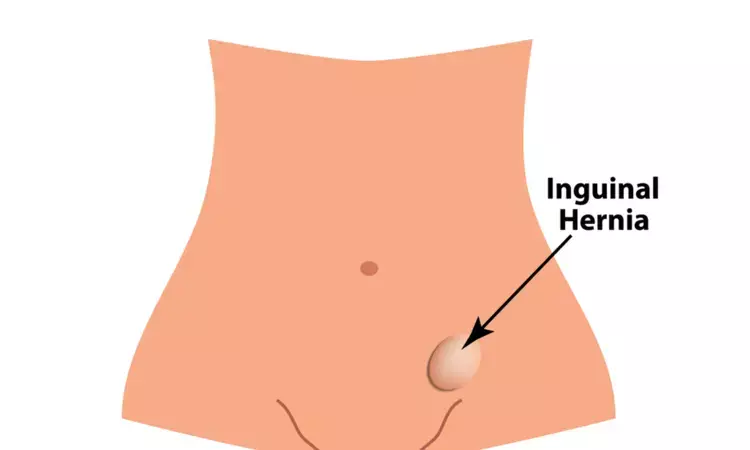- Home
- Medical news & Guidelines
- Anesthesiology
- Cardiology and CTVS
- Critical Care
- Dentistry
- Dermatology
- Diabetes and Endocrinology
- ENT
- Gastroenterology
- Medicine
- Nephrology
- Neurology
- Obstretics-Gynaecology
- Oncology
- Ophthalmology
- Orthopaedics
- Pediatrics-Neonatology
- Psychiatry
- Pulmonology
- Radiology
- Surgery
- Urology
- Laboratory Medicine
- Diet
- Nursing
- Paramedical
- Physiotherapy
- Health news
- Fact Check
- Bone Health Fact Check
- Brain Health Fact Check
- Cancer Related Fact Check
- Child Care Fact Check
- Dental and oral health fact check
- Diabetes and metabolic health fact check
- Diet and Nutrition Fact Check
- Eye and ENT Care Fact Check
- Fitness fact check
- Gut health fact check
- Heart health fact check
- Kidney health fact check
- Medical education fact check
- Men's health fact check
- Respiratory fact check
- Skin and hair care fact check
- Vaccine and Immunization fact check
- Women's health fact check
- AYUSH
- State News
- Andaman and Nicobar Islands
- Andhra Pradesh
- Arunachal Pradesh
- Assam
- Bihar
- Chandigarh
- Chattisgarh
- Dadra and Nagar Haveli
- Daman and Diu
- Delhi
- Goa
- Gujarat
- Haryana
- Himachal Pradesh
- Jammu & Kashmir
- Jharkhand
- Karnataka
- Kerala
- Ladakh
- Lakshadweep
- Madhya Pradesh
- Maharashtra
- Manipur
- Meghalaya
- Mizoram
- Nagaland
- Odisha
- Puducherry
- Punjab
- Rajasthan
- Sikkim
- Tamil Nadu
- Telangana
- Tripura
- Uttar Pradesh
- Uttrakhand
- West Bengal
- Medical Education
- Industry
Study evaluates analgesic effectiveness of two distinct fascial blocks in laparoscopic inguinal hernia surgery patients

Recently published research paper compares the analgesic efficacy of two different fascial blocks, transversus abdominis plane (TAP) block and retrolaminar block (RLB), in patients undergoing laparoscopic inguinal hernia surgery. The study aims to evaluate postoperative pain relief in patients receiving either ultrasound-guided TAP block or RLB under general anesthesia. The primary outcome is the postoperative cumulative Visual Analogue Scale (VAS) score on movement after 24 hours. The study was a randomized controlled trial conducted on 42 male patients with American Society of Anesthesiologists (ASA) physical status Ⅰ and Ⅱ, aged 18–65 years, who received TAP or RLB following laparoscopic inguinal hernia surgery.
The results showed that postoperative cumulative VAS scores at rest at 24 hours were similar in both groups, but VAS scores on movement were lower in the TAP block group. The study concluded that TAP block and RLB had similar postoperative cumulative pain scores on movement after 24 hours, but the VAS score at rest and on movement was reduced at 18 and 24 hours postoperatively in patients receiving TAP block compared to those receiving RLB.
Importance of Postoperative Pain Relief
The paper discusses the prevalence of inguinal hernia repair surgery and the reported moderate-to-severe intensity pain following the surgery. It also emphasizes the importance of effective postoperative pain relief in reducing the consumption of analgesics, enhancing patient satisfaction, and promoting early recovery. The paper further provides a detailed description of the procedures for TAP block and RLB and the outcomes observed in terms of VAS scores and patient satisfaction.
The study acknowledges several limitations, including the enrollment of only ASA I and II patients, the potential influence of additives on the duration of analgesia, and individual variations in pain intensity. It emphasizes the need for future studies to evaluate the efficacy of these blocks in higher ASA grades and to assess individual factors that may affect pain intensity.
Summary and Recommendations
In summary, the study demonstrates that both TAP block and RLB provide effective postoperative pain relief for patients undergoing laparoscopic inguinal hernia surgery, with TAP block showing potentially superior outcomes in reducing VAS scores at rest and on movement at 18 and 24 hours postoperatively compared to RLB. The paper provides valuable insights into the analgesic efficacy of these fascial blocks and highlights the need for further research to explore their efficacy in different patient populations and to consider individual factors influencing pain intensity.
Key Point s -
- The research paper compares the efficacy of transversus abdominis plane (TAP) block and retrolaminar block (RLB) in providing postoperative pain relief in patients undergoing laparoscopic inguinal hernia surgery. The study found that while postoperative cumulative Visual Analogue Scale (VAS) scores at rest at 24 hours were similar in both groups, VAS scores on movement were lower in the TAP block group. This indicates that TAP block may be more effective in reducing pain during movement after surgery.
- A key point discussed in the paper is the importance of effective postoperative pain relief in patients undergoing inguinal hernia repair surgery. The study highlights the prevalence of moderate-to-severe intensity pain following the surgery and emphasizes the significance of reducing analgesic consumption, enhancing patient satisfaction, and promoting early recovery through effective pain management. The paper also provides a detailed description of the TAP block and RLB procedures and their outcomes in terms of VAS scores and patient satisfaction.
Reference –
Ahuja V, Mahajan A, Thapa D, Mitra S, Gupta D, Gupta S, et al. Comparison of the analgesic efficacy of two different fascial blocks in patients undergoing laparoscopic inguinal hernia surgery: A randomized control trial. J Anaesthesiol Clin Pharmacol 2024;40:228-34.
MBBS, MD (Anaesthesiology), FNB (Cardiac Anaesthesiology)
Dr Monish Raut is a practicing Cardiac Anesthesiologist. He completed his MBBS at Government Medical College, Nagpur, and pursued his MD in Anesthesiology at BJ Medical College, Pune. Further specializing in Cardiac Anesthesiology, Dr Raut earned his FNB in Cardiac Anesthesiology from Sir Ganga Ram Hospital, Delhi.


